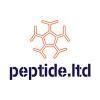Copying some of the most important information from the inventors notes:
http://www.vielight....ntor-notes.pdf
"Since light penetrates significantly more deeply into the brain from an intranasal position (in the nose) than from transcranial (on the head) locations,6 it is logical that a light source located in the intranasal position is crucial if one is looking for a comprehensive PBM treatment of the brain. On its own merit, researchers have already found that Intranasal Light Therapy has positive outcomes with neurologic conditions in humans, such as insomnia,23 mild cognitive impairment,24 Alzheimer’s disease,25 Parkinson’s disease,26 27 28 29 schizophrenia,30 migraine and headaches,31 32 and stroke (cerebral infarction)33 34 35 36. For more details, please see http://www.medicligh...Stimulation.pdf.
(..)
Therefore, outcomes can be improved significantly if intranasal PBM is combined with transcranial LEDs. This leads to the next question: “How can we incorporate transcranial LEDs with the intranasal LED to create an efficient and effective device?” This leads me to consider targeting only selected areas of the brain, which are the hubs of the key networks, primarily the Default Mode Network (DMN) and secondarily, the Salience Network (SN) : Treat these busy and extensively connected hubs and the whole-brain would receive treatment.
For a long time, I thought it would be difficult to achieve an effective and portable device with a transcranial system, so I focused on the intranasal light therapy devices that I co-invented earlier (with patents issued and pending). Although the intranasal devices aim at some of the most important nuclei located in the ventral (under) side of the brain, they are incomplete because the dorsal (or upper) areas have been ignored. With new understanding of the DMN, there is now an opportunity to create a portable and affordable transcranial system by targeting these locations.
Dr. Juanita Anders (who is also one of our science advisors) and her research collaborators investigated the wavelength dependence of light scatter and absorbance in intraparenchymal brain tissue using 660, 808, and 940nm wavelengths. Their research indicated that the 808nm wavelength light demonstrated superior CNS tissue penetration.8 This is also reflected in an earlier study which showed that wavelengths of around 810 nm penetrated deepest into the tissues of the spinal cord
The efficacy differences between pulsed and continuous wave light are not entirely clear but the evidence are tilted in favor of pulsed wave.66 Generally, ultra-short pulses can penetrate deeper when pulses are intermittent but set at a higher power. Pulsing, as opposed to continuous exposure, prevent the undesirable thermal effect (building up of heat) when a relatively high power is used. In turn, high powered pulsed light would result in more cellular energy (ATP), as demonstrated in a study on rabbits.67 Another mechanism of action involves the pulsed photons promoting chromophores to excited states in the upper tissue layer. This opens the way for more photons to enter into the tissue during the next pulse. In contrast to continuous wave, superior results were obtained when lasers at 808 nm were pulsed at 100 Hz and 1000 Hz.68
In addition, pulsed mode comes with a “duty-cycle”, which is the on-off relative interval. I have chosen 50% duty-cycle for our NIR devices because it resembles closely to the even square waves of brain oscillation. My hypothesis is that this facilitates entraining the brain into the alpha wave (between 8 to 10 Hz). Although there are no clinical data, the alpha state is suggested to have antidepressant quality as well as a booster of the immune system. In summary, the main reason for adopting 10 Hz pulsed mode remains the significantly low stress scores when traumatized animal brains were exposed to 810 nm light energy pulsing at 10 Hz.69
Besides the need to reach hard-to-access locations in the brain, there is a need for more light to penetrate deeper into brain tissue into areas like the posterior cingulate cortex (important for Alzheimer’s and a key hub in the DMN), the precuneus (a hub of the DMN) and to the substantia nigra (important for Parkinson’s) and the brainstem. With our more powerful Transcranial diode using 810 nm LED diode we are able to extract a consistent 41 mW of power at this time while the closest that I have seen is about 30 mW. This means that the Neuro delivers about twice the power of the 810 Infrared intranasal model. This calculated higher power delivers deeper penetration into the without causing tissue damage.83 Our field test in this area appears to confirm this. Feedback received from the field indicates that it has been particularly helpful with brain fogginess, impaired cognition and chronic facial pain. As these are anecdotal experiences, the next stage is to carry out controlled studies for validation. In this respect, we have started a pilot study on Alzheimer’s disease and dementia at the time of writing. In summary, we are aiming to achieve, quicker and more consistent neurologic outcomes with the Neuro by directing therapeutic light energy with more energy and deeper penetrating ability to the hubs of the DMN.
Based on the theory of Biphasic Dose Response, which basically says that low energy dose heals but high energy dose damages,84 people who are very sensitive to electromagnetic energy or people with brain infections may experience a headache while using the Neuro. Based on this, I generally recommend that the Neuro be used for 20 minutes per treatment but not more than once every two or three days. The milder 810 Infrared intranasal device can be used daily to complement the Neuro. Another point to consider is how do we maximise the benefits from the use of the Neuro or the 810 Infrared? Since the DMN is activated when we are not performing any task, and usually when our eyes are closed, we want to apply the Neuro or the 810 Infrared intranasal device s with our eyes closed.85 While using the Neuro, the circulatory and immune system can be treated simultaneously using the Vielight 633 Red or the 655 Prime intranasal devices."
Edited by BigPapaChakra, 17 June 2015 - 06:56 PM.





























































